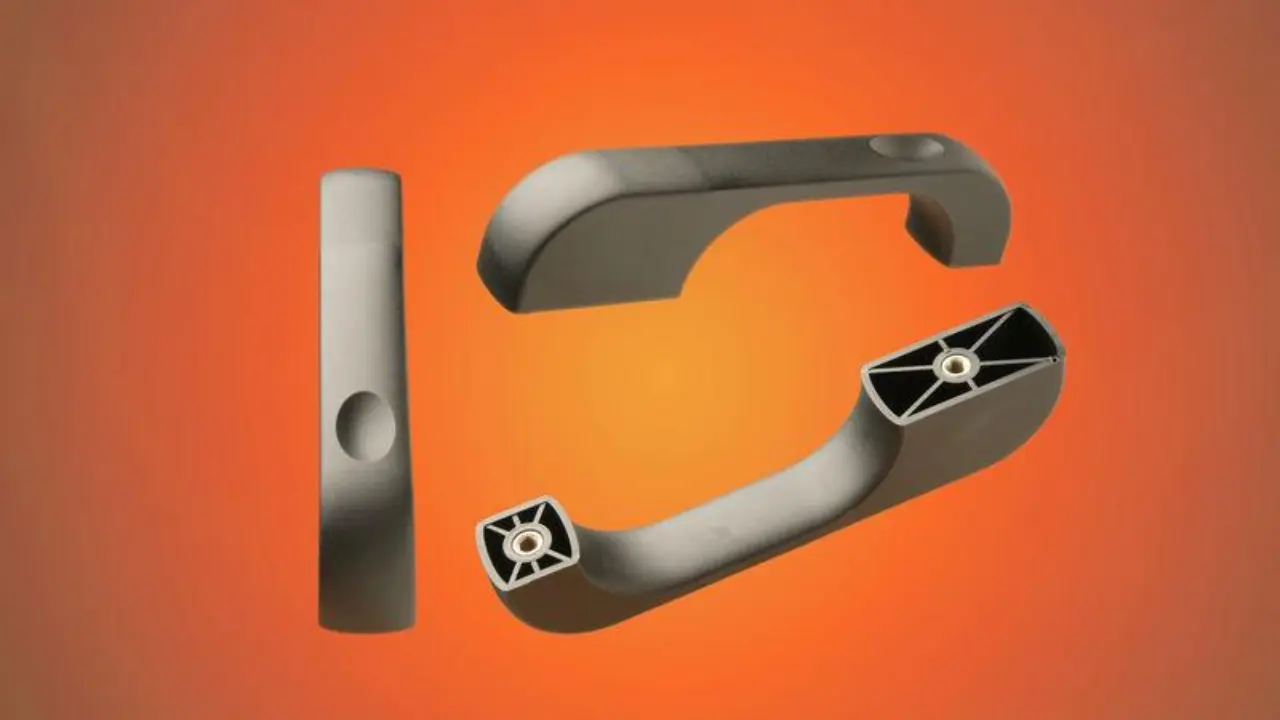In the world of manufacturing, efficiency, and productivity are crucial factors that can impact the success of a business. In this article, we will explore the Gas Assisted Injection Molding concept and its role in enhancing manufacturing efficiency.
1. Understanding Gas Assisted Injection Molding
Gas Assisted Injection Molding is a process that involves injecting a controlled amount of gas into the cavity of a mold during the injection molding process. This gas, typically nitrogen, displaces the molten plastic material, creating a hollow cavity within the molded part. This technique allows manufacturers to produce lightweight, open components with precise geometries and complex designs.
2. Advantages of Gas-Assisted Injection Molding
Gas Assisted Injection Molding offers several advantages that contribute to enhanced manufacturing efficiency:
a. Reduced Material Consumption
One of the primary benefits of GAIM is the significant reduction in material consumption. By creating hollow sections within the molded part, less plastic material is required, resulting in cost savings and reduced environmental impact. This reduces material costs and decreases the final product’s weight, making it more lightweight and economical to transport.
b. Improved Part Quality
GAIM enables the production of parts with enhanced surface quality and dimensional accuracy. The controlled gas injection helps eliminate sink marks, warping, and internal stresses commonly associated with traditional injection molding. The result is high-quality parts with improved aesthetics and dimensional consistency, reducing the need for post-processing and enhancing overall manufacturing efficiency.
c. Enhanced Design Flexibility
Gas Assisted Injection Molding allows for greater design flexibility, enabling the creation of intricate and complex part geometries that would be difficult to achieve with traditional molding methods. The hollow sections created by the gas injection can provide internal channels, ribs, or other structural features, enhancing the functionality and performance of the final product. This design freedom opens up new possibilities for innovation and differentiation in product development.
d. Shorter Cycle Times
GAIM can significantly reduce the cycle times required for production. The gas injection phase helps accelerate the cooling process by displacing the molten plastic material, allowing for faster solidification and shorter cycle times. This translates into increased productivity and higher production volumes, improving manufacturing efficiency and reducing lead times.
3. Applications of Gas Assisted Injection Molding
Gas Assisted Injection Molding finds applications in various industries, including automotive, consumer goods, electronics, and packaging. Some typical applications include:
- Automotive components: GAIM produces lightweight yet structurally strong parts such as instrument panels, door panels, and air intake manifolds.
- Consumer goods: The technique is employed to manufacture furniture, appliances, and sporting goods, where lightweight and high-quality components are desirable.
- Electronics: GAIM produces intricate parts for electronic devices, such as housings, connectors, and bezels.
- Packaging: GAIM is utilized for producing hollow containers, such as bottles and containers, which require excellent surface finish and strength.
4. Implementation of Gas Assisted Injection Molding
To implement Gas Assisted Injection Molding effectively and maximize its benefits, manufacturers should consider the following key points:
- Design Optimization: Collaborating with experienced designers and engineers is essential to optimize the part design for GAIM. This includes incorporating appropriate draft angles, wall thicknesses, and proper venting to facilitate gas flow and achieve desired outcomes.
- Mold Design and Construction: The mold used for GAIM must be designed and constructed to accommodate gas channels and venting systems. This requires carefully considering the mold’s cooling system and the integration of gas injection nozzles and gas flow control mechanisms.
- Process Control and Monitoring: Maintaining precise control over the gas injection parameters, such as pressure, timing, and duration, is critical to achieving consistent results. Continuous monitoring and adjustment of these parameters during the injection process are necessary to ensure optimal part quality.
- Operator Training: Proper training of operators involved in Gas Assisted Injection Molding is vital to ensure they have a thorough understanding of the technique, its benefits, and the specific requirements of the process. This includes knowledge of equipment operation, troubleshooting, and quality control procedures.
5. Future Developments and Advancements
As technology continues to evolve, the Gas Assisted Injection Molding field will likely witness further advancements. Some potential future developments include:
- Improved Gas Control Systems: Advancements in gas control systems will enable more precise and automated control over gas injection parameters, enhancing process control and repeatability.
- Material Innovations: Ongoing research and development efforts focus on developing new mates tailored explicitly tailored for Gas Assisted Injection Molding. These materials will offer improved flow characteristics, enhanced strength, and better compatibility with the process.
- Integration of Industry 4.0 Technologies: Integrating Industry 4.0 technologies, such as real-time monitoring, data analytics, and machine learning. It will enable manufacturers to optimize GAIM processes, improve efficiency, and reduce waste.
Conclusion
In conclusion, Gas Assisted Injection Molding is a powerful technique that can significantly enhance manufacturing efficiency. By reducing material consumption, improving part quality, offering design flexibility, and shortening cycle times, GAIM enables businesses to achieve cost savings, improve product performance, and increase productivity. To fully leverage the benefits of GAIM, manufacturers should focus on design optimization, mold design considerations, precise process control, and continuous operator training. With further advancements on the horizon, Gas Assisted Injection Molding is poised to play a pivotal role in the future of manufacturing.

